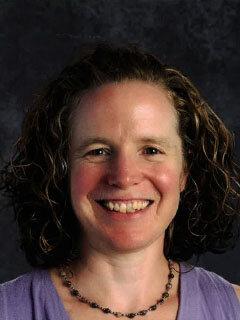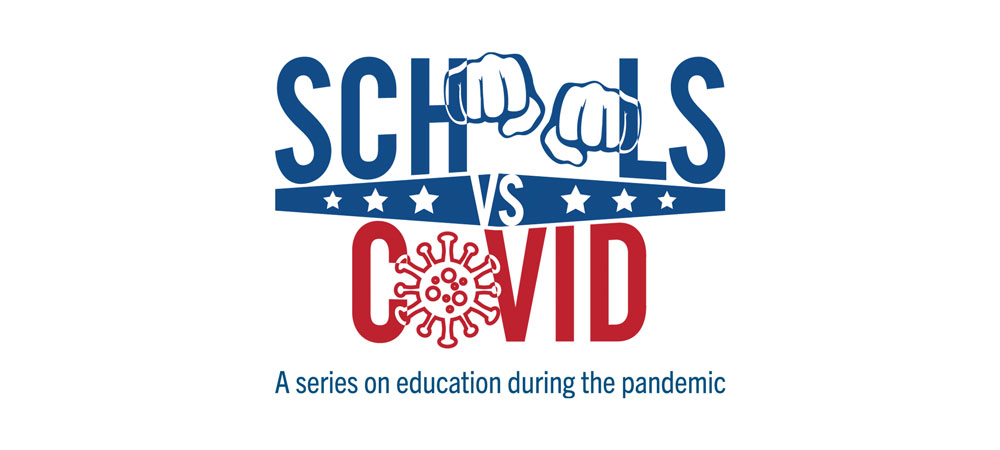Compared with the toll that COVID has taken in cities such as New York, Miami and Chicago, the 1,427 infections and 57 deaths in Vermont’s Montpelier-Roxbury region don’t sound like a lot.
Then again, the area’s population stands at just under 8,000 people. And with COVID, for which there is still no cure and no vaccine, even a small number of infections is sufficient to turn the world upside down.
Elizabeth Bonesteel (M.A. ’03, Curriculum & Teaching), Superintendent of the Montpelier-Roxbury Public Schools, underscored that point in a letter she sent to her community on July 30th.
“The situation that everyone in this community finds ourselves in is excruciatingly hard,” wrote Bonesteel, who is entering her second year as superintendent. “I am feeling it acutely from all sides — parents, students, teachers, custodians, administrators, my own family — everyone.”

IMPOSSIBLE SITUATION Bonesteel urges compassion for all amidst an overwhelming workload and choices that often seem to have no best answer. (Courtesy Montpelier Roxbury Public Schools)
The good news is that the district has received the state’s permission to reopen schools on a full, five-day-per-week schedule. But creating a plan to serve four schools, 1,200 students and a group of stakeholders whose skills and needs do not always align has taken all that Bonesteel and her staff have to give, and now comes the hard part: putting it into effect.
Among the plan’s many intricacies:
As per orders from Vermont’s governor, all students and adults will wear masks, unless they can't for a diagnosed medical reason, and will be distanced from one another by six feet in every classroom. To ensure that building ventilation systems are working at maximum capacity, Montpelier-Roxbury’s engineers are working with Efficiency Vermont to clean out the systems and equip them with new, high-grade filters and a feature that responds as if there were more people in the buildings earlier and later in the day.
The district’s elementary and middle schools will close early, at 1 p.m., to minimize students’ time in the classroom and exposure to COVID-19. At the high school level, to accommodate state distancing requirements intended to combat disease transmission, the year will be divided into quarters, with students taking two courses per quarter and dividing into morning and afternoon cohorts.
The economy doesn’t work without our schools, yet not once has anyone called our educators ‘essential workers.’
—Elizabeth Bonesteel
Montpelier-Roxbury will use a “pod model,” developed in Europe, in which every classroom will have two adults in it. Teachers and students will stay in the same room all day, avoiding exposures that could increase the risk of transmission. One possible side-benefit of the pod model: It raises “the possibility of true collaboration across disciplines,” Bonesteel says, through pairings of, say, a science teacher and physical education teacher.
Because the district also must accommodate students with health issues or fears, Bonesteel and her team also are creating a “fully-integrated, fully staffed, online school” for K-8 students, staffed with separate teachers who will not be asked to do double duty in both online and in physical schools. The virtual academy will be led by Montpelier-Roxbury’s director of technology and curriculum, who will provide two and a half weeks of intensive training for teachers on how to develop online relationships and partner virtually with parents. The reopening of schools has been postponed by one week, until September 8th, to allow time for that training and for parent-teacher conferences to review how each K-8 student fared this past spring, both emotionally and in adjusting to online learning. Through the conferences, parents will determine which option — online or in-person — will serve their child best this fall. As of now, whichever choice parents make, they’ll have to stick with it for the entire school year.
“I am confident that we are on a path that will allow us to open in a manner that not only mitigates risk, but also supports the majority of our students, families, and staff in what they need,” Bonesteel wrote in her letter.
Still, with new challenges surfacing nearly daily across the nation, it seems a given that at some point, things will not go smoothly. In some ways, Montpelier-Roxbury is prepared for that, too. For example, should the schools have to return to all-online instruction in the event of a spike in COVID-19 cases, the virtual academy’s teachers “are forming a professional community that will be ready to help the in-school teachers if needed,” Bonesteel said in a recent interview
But, she warned, there are only so many times that an entire system can pivot. Things could “fall apart in a heartbeat” if the district can’t hire enough teachers to meet the demand for either in-person or online instruction. The latter scenario could materialize because, under a state ruling, teachers who taught in the schools last year cannot elect to teach online, even if they have health or childcare needs. Instead, they must choose between returning to school or leaving the district.
“We’ve been put in an absolutely impossible situation,” Bonesteel said. “Our teachers are anxious, and many are scared, regardless of whether they have health concerns or not.”
Collaboration and community spirit have been the Montpelier-Roxbury district’s salvation through the crisis, Bonesteel said. For example, when the schools shut down last March, teachers and administrators remained in a working community through the summer and will continue to support one another in the fall. For Bonesteel, their efforts amid the chaos and anxiety of the pandemic should be a wake-up call to the entire nation.
“The economy doesn’t work without our schools, yet not once has anyone called them educators ‘essential workers,’” she said. “As a country, we need to think about what we are paying our teachers and how we are treating them. If you’re just talking about teachers delivering child care, you’re missing the boat. We take care of children, yes, but we do so much more. We’re making something of your kids. I’ve got your kid, and I’m making something of them. That is the economic driver; that is the force.”
